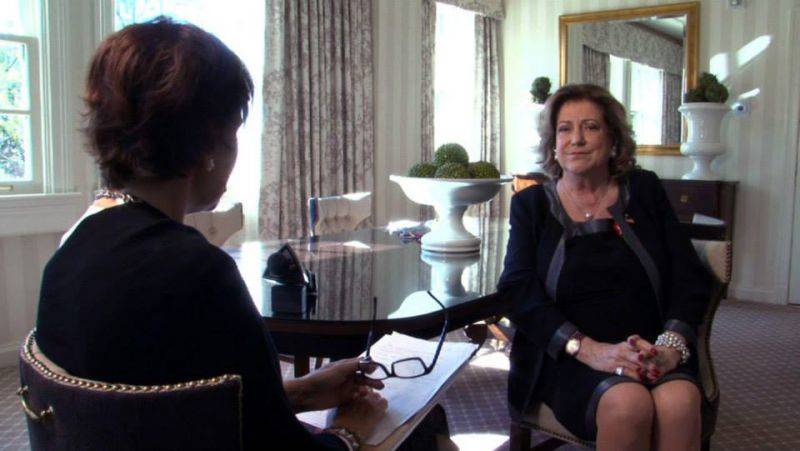A Conversation with Diana Bracco
I met Diana Bracco in Washington outside the annual convention of the National Italian American Foundation, where she was being honored with a Special Achievement Award in Philanthropy. But that’s not the only reason for our meeting.
There’s a special biographical connection between the great Milanese-born entrepreneur and the Italian- American experience. “My grandfather and my father came to Milan from a small village in Dalmatia no one has ever heard of,” says Bracco.
“To start from a place like that and grow the way they did means that, besides being lucky, they were full of drive and intelligence. In my opinion, Italian-Americans are the very image of this type of growth. I’m very proud of this recognition, which I intend to dedicate to my family, and I’m sure that by bolstering the relationship between the Italian-American community and Italy we only stand to learn more, share our stories and combine our resources.”
For the last few months Bracco, the Group Chairman and Chief Executive Officer of Bracco, a multinational healthcare company, has acted as President of the Universal Expo set to take place in Milan in 2015. Roughly 140 countries, including the US, will participate. She has used her new role as an opportunity to appeal to Italian Americans to visit the country during the six months of the Universal Expo to rediscover their roots and the beauty of Italy.
“I urge you to come to Italy in 2015. Take your children and grandchildren long to the Expo so they can see our country on such an unrepeatable occasion. The Italian Pavilion will provide the magic of a journey through the Italy of yesterday, today and tomorrow, a combination of tradition and innovation showcasing the world-famous Italian style. For them it will be a way to rediscover their roots and Italy’s cultural heritage.”
Bracco, in short, is a bit like an ambassador to her city. Clearly a city she loves. “Milan is a very vibrant city, full of culture, theater, music and art. There are many events, so many that it’s hard to perceive how it coheres. Maybe what I ask is that a city design its own image and work toward that. Milan has lost some of its old industrial plants Many people have moved out of the city. Naturally, this entails making changes, and Milan can do a lot to build its image as a cultural, philosophical and lifestyle mecca.”
Clearly, Expo 2015 will be a part of the process aimed at revamping the city’s identity. The theme, “Nurture the Planet, Energy for Life,” gives the Expo the opportunity to launch a global debate about the problems facing humanity in the third millennium: food, resources
and sustainability. So Milan will provide a platform for a new discussion concerning the world economy and two very important and difficult subjects. “On the one hand, food safety. On the other, ensuring there is enough food—food and water. Water will play a very significant role in the Expo.” These are major issues that go beyond economics and aren’t your usual Expo fare.
“We don’t want Expo Milan to be a one- way conversation. We want to welcome everyone’s ideas. We want to start a discussion for the world, for many countries, taking into consideration their various identities. Expect to see the whole spectrum represented in an extremely innovative way.” The Expo will be a great opportunity for Milan and the rest of Italy, putting both at the center of the world’s attention, the real place to be. No fewer than 20 million visitors are expected to visit between May 1st and the end of October 2015.
The Site. Architecture and Themes
The Expo Milano 2015 site was designed with the support of internationally renowned architects such as Stefano Boeri, Ricky Burdett and Jacques Herzog. Its common core is the idea that everyone on the planet should have access to food that is healthy, safe and sufficient. The site is devised as an island surrounded by a canal that brings one of the basic elements of this “extraordinary setting” into the project: water. Together with the canal, the site’s main symbolic elements help to define the set- ting at its cardinal points: The Hill is one of the site’s principal landmarks and home to the Mediterranean agro-ecosystem.
The Open Air Theatre will host concerts, plays and official ceremonies. The Lake Arena will be the venue for special water shows, fireworks, concerts and performances. The Expo Center comprises three inde- pendent functional blocks: an auditorium, a performance area and an office block. There will also be Thematic Areas, a Biodiversity Park, a Future Food District, and a Children’s Park. Dozens of countries will have their own pavillon, including the U.S. In the Italian Pavilion, regions and cities, companies and associations, will show to the world the culture and tradition of Italian food that stand out thanks to the high quality of raw materials and finished products.


































i-Italy
Facebook
Google+
This work may not be reproduced, in whole or in part, without prior written permission.
Questo lavoro non può essere riprodotto, in tutto o in parte, senza permesso scritto.